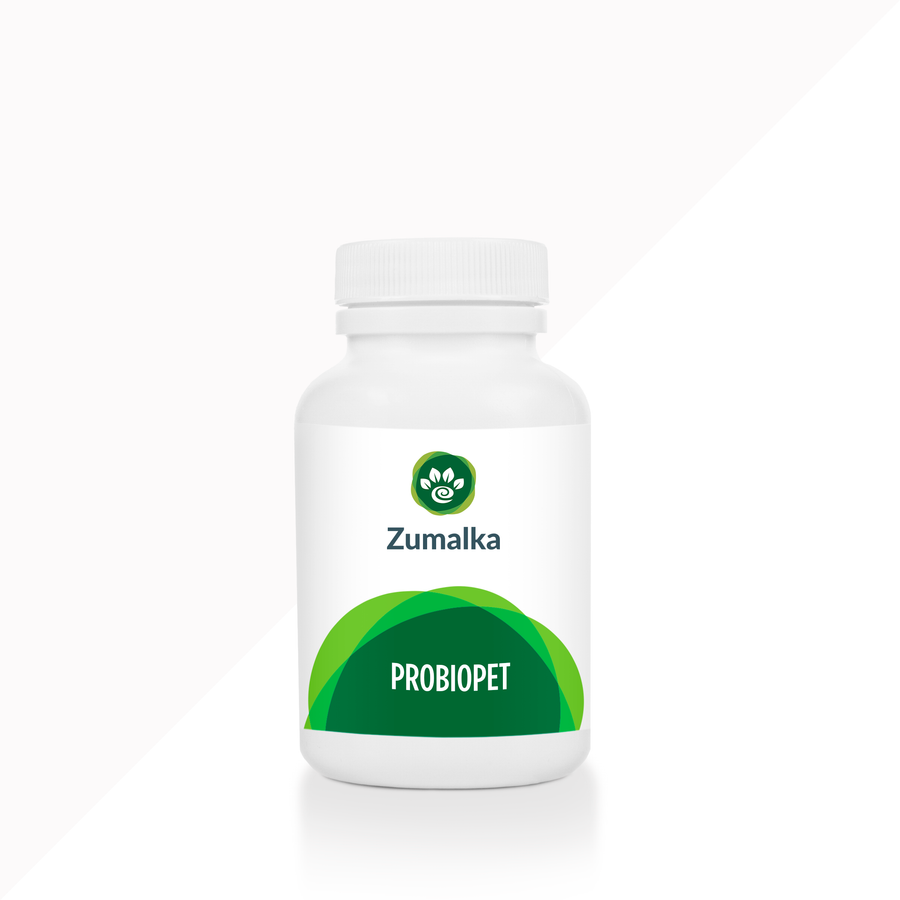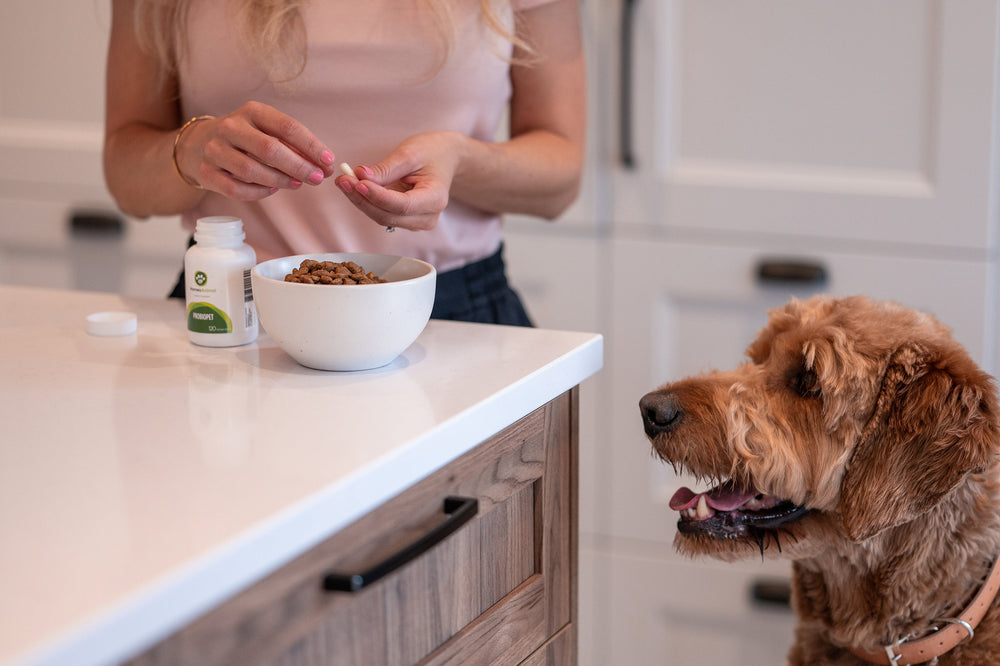Vet Insights: Top 8 Exercise Mistakes to Avoid for Senior Golden Retrievers
List of Contents
Your Golden Retriever’s joyful spirit doesn’t fade with age, but their exercise needs change as they grow older. The right activities keep them active and happy, while the wrong ones can risk injury or discomfort.
Adapting exercise routines for senior dogs is essential to protect their joints, maintain mobility, and support overall health. Gentle, age-appropriate activities also provide mental stimulation, helping preserve cognitive function as they grow older.
This guide highlights eight common exercise mistakes Golden Retriever owners often make with their senior dogs and why they can be harmful. Backed by expert advice, it also offers safe, effective alternatives to keep your older Golden healthy, active, and happy.
Why Exercise Remains Essential for Your Aging Golden Retriever

The old saying “move it or lose it” applies to dogs as much as people, especially as they age. Proper exercise helps maintain muscle tone, strengthen joints, and manage arthritis, a condition affecting nearly 80% of dogs over eight years old.
Exercise is vital for senior dogs. It helps manage weight as metabolism slows and prevents excess strain on their joints. Just as importantly, regular activity stimulates the mind, preserves cognitive function, and lowers the risk of depression.
Consistent exercise helps prevent behavioral problems in senior dogs that often arise from boredom or restlessness. It also deepens the bond between you and your Golden Retriever, turning activity into quality time together.
8 Common Exercise Mistakes to Avoid with Senior Golden Retrievers

This section highlights the most common exercise mistakes that can affect your senior Golden Retriever’s health and comfort. By avoiding them, you’ll help protect their joints, preserve mobility, and keep them as active for years to come.
#1. Assuming “slowing down” is just normal aging
It’s natural for Golden Retrievers to slow down with age, but assuming it’s “just aging” can mask underlying health issues. Stiffness, reluctance to move, or fatigue may signal manageable conditions that proper care can support or even resolve.
Before starting or adjusting your senior Golden Retriever’s exercise routine, schedule a veterinary check-up. A vet can identify issues such as arthritis, heart disease, or muscle loss and recommend safe activities. For ongoing health and mobility, senior dogs should ideally have wellness exams every six months.
#2. Ignoring subtle signs of pain and discomfort
Golden Retrievers often hide pain and may continue exercising even when uncomfortable, making it easy to overlook early warning signs. Ignoring subtle cues like stiffness, limping, or reluctance to play can allow injuries or conditions to worsen unnecessarily.
Pay close attention to your senior Golden Retriever’s behavior, as reluctance to walk, jump, or move can indicate discomfort. Difficulty getting up or lying down is another common sign of pain that shouldn’t be ignored.
Limping or stiffness after rest or exercise is a clear sign your senior Golden Retriever may be experiencing joint pain. Excessive licking at certain areas, even if they don’t appear sore, or whining during movement may be signs of pain or discomfort. These behaviors shouldn’t be ignored and could indicate an underlying issue that needs expert attention.
Behavioral changes, such as suddenly refusing to continue a walk, can signal pain or discomfort in your senior Golden Retriever. Paying attention to these shifts helps you catch health issues early and protect their well-being.
#3. Sticking to high-impact workouts and activities
High-impact exercises like long fetch sessions, repeated jumping, or running on hard pavement can worsen joint problems in senior Golden Retrievers. These strenuous activities often accelerate arthritis and raise the risk of painful injuries such as sprains or meniscal tears.
Replace high-impact activities with low-impact exercises that protect your senior Golden Retriever’s joints while keeping them active. Swimming provides a safe, full-body workout, while supervised leash walks on grass or sand offer gentle daily exercise.
#4. Being a “weekend warrior”
Cramming a week’s worth of activity into just one or two intense sessions can overwhelm a senior Golden Retriever’s body. This “weekend warrior” approach often causes muscle soreness, fatigue, and a higher risk of injury.
Consistency is key for senior Golden Retrievers. Several short walks are far safer and more effective than one long, strenuous outing. Aim for two or three 10–15 minute walks daily to support mobility, maintain energy, and reduce injury risk.
#5. Forgetting to warm up and cool down
Senior Golden Retrievers, like people, need time to prepare their muscles and joints before exercise. Skipping warm-ups or cool-downs increases stiffness and raises the risk of strains or injury.
Start each session with a short warm-up to get your senior Golden Retriever’s blood flowing and muscles ready. Simple activities like a few yard laps, gentle stretches, sit-to-stand reps, or hind-leg “bicycling” help improve circulation and reduce injury risk.
#6. Overlooking environmental hazards
Senior Golden Retrievers are especially vulnerable to environmental hazards during exercise. Hot pavement can burn paw pads, extreme temperatures may cause heatstroke or frostbite, and sharp debris increases the risk of injury.
Protect your senior Golden Retriever by paying close attention to walking surfaces and weather conditions. Opt for grass or dirt paths instead of asphalt, especially on hot days, to prevent burns and joint stress.
In summer, exercise your senior Golden Retriever during the cooler hours of early morning or evening to avoid overheating. In cold or rainy weather, keep them comfortable with a warm sweater or protective raincoat.
#7. Focusing only on physical exercise
Focusing only on physical exercise overlooks your senior Golden Retriever’s mental health needs. Without mental stimulation, older dogs are more prone to boredom, cognitive decline, and even depression.
Add mental enrichment to your senior Golden Retriever’s routine with simple brain games. Puzzle toys, treat-dispensing feeders, and activity boards keep their minds sharp while preventing boredom and frustration.
Fun activities like hide-and-seek with treats or toys keep your senior Golden Retriever mentally engaged while adding variety to their routine. Practicing basic obedience with positive reinforcement further stimulates their brain and deepens your connection.
#8. Stopping exercise altogether
Completely stopping exercise when your senior Golden Retriever seems stiff or tired can make problems worse, leading to muscle loss, increased stiffness, and declining mobility. Even gentle, low-impact activity is far better than none at all.
Instead of giving up on exercise, adapt your senior Golden Retriever’s routine to match their abilities. If long walks are too demanding, opt for three or four shorter 15-minute walks to keep them active and comfortable.
If your senior Golden Retriever tires easily, conserve their energy by driving to the park so they can enjoy the walk itself. For longer outings, consider a dog stroller, which lets them participate without overexertion.
Signs Your Senior Golden Retriever Has Had Too Much Exercise

Watch for signs your senior Golden Retriever may be overexercised, such as extreme fatigue or lingering lethargy after activity. Sore, red, or damaged paw pads are also clear indicators that they’ve done too much.
Muscle soreness or stiffness after activity is another sign your senior Golden Retriever may be overexercised. Excessive panting, dehydration, or other signs of heat exhaustion also signal it’s time to slow down.
Behavioral changes, such as reluctance to join activities your senior Golden Retriever once loved, may signal overexertion or discomfort. Paying attention to these shifts helps protect their health and ensure exercise stays safe and enjoyable.
Boosting your senior dog’s immunity is a must during this time
As dogs grow older, their immune systems gradually weaken, increasing their risk of illness and infection. Strengthening your senior dog’s immunity is key to supporting long-term health and vitality. Zumalka’s IMMUNOPET is specially formulated to help provide the immune support aging pets need to stay active, healthy, and resilient.
IMMUNOPET is a natural, broad-spectrum immunostimulant designed to strengthen your pet’s immune system with powerful plant-based ingredients. It helps increase hemoglobin levels, purifies the blood and lymph nodes, and supports healthy white blood cell production to fight bacterial and viral infections.
Easy to administer and highly versatile, IMMUNOPET is an essential, premium natural option to support recovery from serious health conditions, even cancer, and help your pet feel better, faster.
A Final Word
Exercising a senior Golden Retriever isn’t about stopping. It’s about adapting routines with care to match their changing needs. Thoughtful adjustments keep them active, comfortable, and happy well into their golden years.
Always consult your veterinarian before adjusting your senior Golden Retriever’s exercise routine to ensure it’s safe and effective. Prioritize low-impact, consistent activity and monitor for signs of pain to protect their long-term health and mobility. For added support, guidance from a certified pet homeopathy professional is also beneficial.
Adapting your senior Golden Retriever’s exercise routine is more than a health choice. It’s a meaningful way to cherish and strengthen your bond. With thoughtful care, these golden years can be active, joyful, and deeply rewarding for you both.
FAQs
How much exercise does my senior Golden Retriever need?
Most senior dogs benefit from 30 to 60 minutes of daily exercise, but this depends on their health and mobility. It's often best to break this up into shorter, more frequent sessions. Always consult your vet for a personalized plan.
Is swimming really safe for senior dogs?
Swimming is one of the safest, most effective low-impact exercises for senior dogs, offering a full-body workout without straining the joints. Always supervise closely and consider a life vest to ensure safety.
What if my senior dog has arthritis?
Dogs with arthritis can and should still exercise, but it must be low-impact. Regular, gentle movement helps keep joints lubricated and muscles strong. Swimming and short, slow walks on soft surfaces are excellent choices.
Should I exercise my senior dog?
Yes, senior dogs benefit greatly from regular exercise to support mobility, joint health, and cognitive function. Focus on gentle, low-impact activities and consult your veterinarian or certified pet homeopathy expert for safe, personalized recommendations.
What not to do with old dogs?
Avoid overexerting senior dogs with high-impact exercise, skipping vet visits, or ignoring signs of pain. Don’t neglect mental stimulation, proper nutrition, or emotional connection. These are vital for keeping older dogs healthy, comfortable, and happy.
How often do senior dogs need to be let out?
Senior dogs typically need to go outside every 4–6 hours, depending on health and bladder control. More frequent potty breaks support comfort, prevent accidents, and help maintain good urinary health in older dogs.
Can too much exercise be bad for dogs?
Senior dogs typically need to go outside every 4–6 hours, depending on health and bladder control. More frequent potty breaks support comfort, prevent accidents, and help maintain good urinary health in older dogs.
How do you tell if a dog is over-exercised?
An over-exercised dog may show excessive panting, stiffness, lethargy, sore paw pads, or reluctance to move. Behavioral changes, such as refusing to play or walk, also signal they’ve had too much activity.
Is 2 hours of exercise a day too much for a dog?
Two hours of daily exercise can be excessive for many dogs, particularly seniors. Safe limits depend on breed, age, and health. Consult your veterinarian or a pet homeopathy expert to create a gentle, tailored routine.









Leave a comment